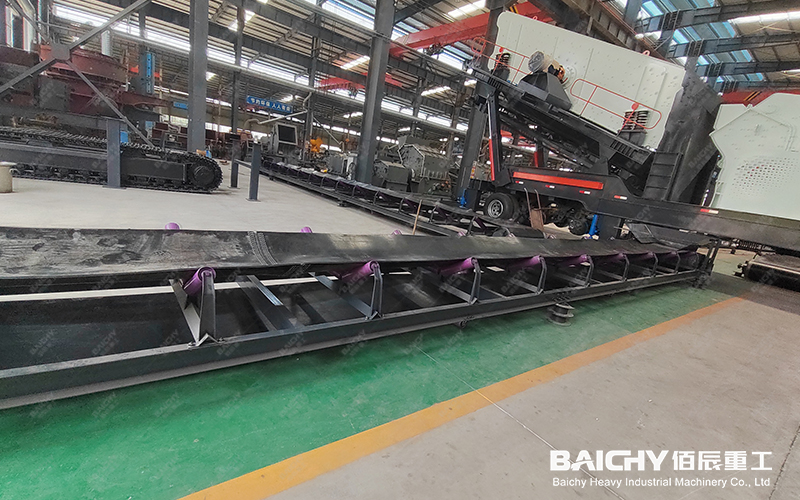
Conveyor belt, also known as a transport belt, transmission belt, or conveyor belt, is another form of belt in industrial belt and is a kind of conveyor belt specially used to transport materials. In the process of conveying materials such as gravel and sand, the conveyor belt realizes the rapid and stable transmission of a large amount of materials through a continuous belt structure, which greatly improves work efficiency.
Structure and composition of belt conveyor
1. Conveyor belt: a belt-shaped rubber material made of several layers of fabric or wire rope, which has the properties of wear resistance, pressure resistance, and temperature resistance. The material and model of the conveyor belt are selected according to the nature and size of the conveyed material.
2. Drive device: usually a motor, which provides torque to drive the transmission roller to keep the conveyor belt running.
3. Roller: installed on the frame, supports the conveyor belt and reduces its running resistance. The roller is pided into upper roller and lower roller. The upper roller is used to support the conveyor belt and materials, and the lower roller is used to support the unloaded conveyor belt.
4. Loading device: located above one end of the conveyor, used to load materials onto the conveyor belt.
5. Discharge device: located below or on the side of the other end of the conveyor, used to unload materials from the conveyor belt.

Working principle of belt conveyor
The conveyor belt is arranged on the drive roller and the tail reversing roller to form an infinite ring belt. When working, the motor provides torque to drive the drive roller, and the drive roller drives the belt and the material on the belt to run together through the friction between the conveyor belt and the conveyor belt. The material moves along the conveyor belt under the action of gravity and friction and finally realizes the continuous transportation of materials.
Application scenarios of belt conveyor
1. Gravel and sand conveyor belts are widely used in many industries such as mines, construction sites, and building materials production. Specifically:
2. Mining: used to transport ore from the surface of the mine to the crushing station or ore dressing plant to improve mining efficiency.
3. Construction site: used to transport building materials such as sand, stone, and cement, which greatly reduces the labor intensity of workers and speeds up the progress of the project.
4. Building materials production: can be used to transport raw materials such as sand and gravel to achieve assembly line operation and reduce costs.











